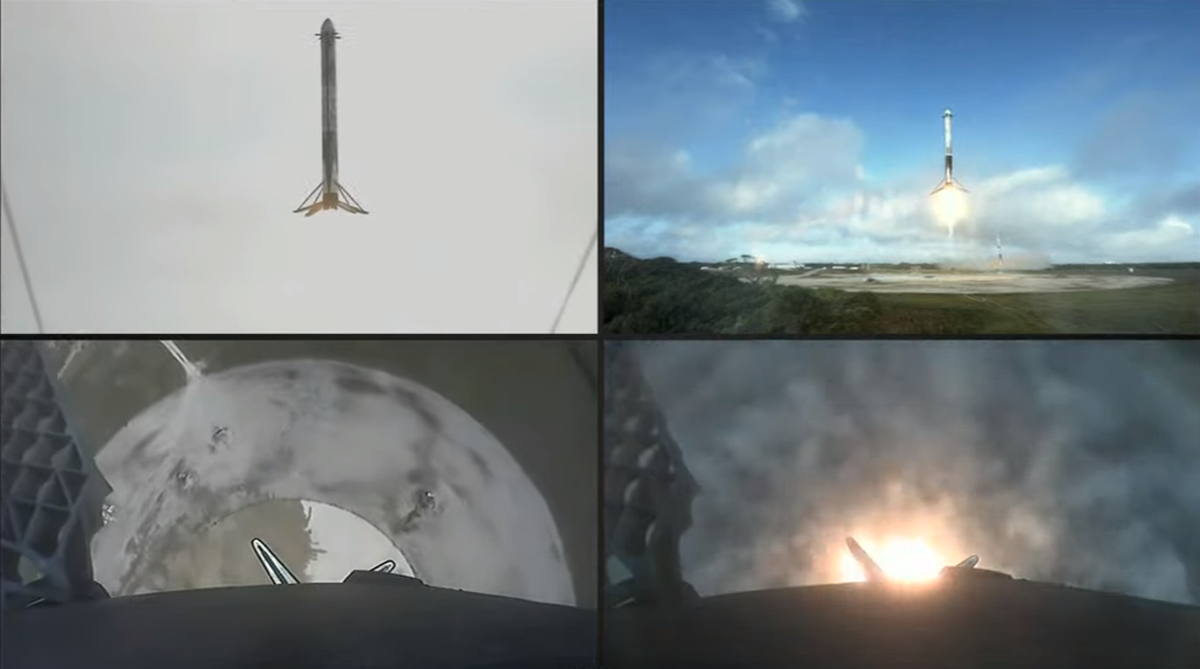CAPE CANAVERAL, Fla. — The world’s most powerful rocket currently in operation took flight this morning (Nov. 1) for the first time in more than three years.
SpaceX’s Falcon Heavy rocket, which consists of three of the company’s modified Falcon 9 first-stage boosters strapped together, lifted off today from Pad 39A here at NASA’s Kennedy Space Center (KSC) at 9:41 a.m. EDT (1341 GMT) amid thick fog at the launch pad. The Heavy carried a handful of classified payloads toward geostationary orbit for the U.S. Space Force on a mission called USSF-44.
USSF-44 is the fourth launch for the Falcon Heavy overall and its first since June 2019. That low flight rate stands in stark contrast to SpaceX’s Falcon 9 workhorse, which has flown more than once per week this year on average. And while the overwhelming majority of those Falcon 9 launches have used pre-flown boosters, today’s Falcon Heavy launched on three brand-new first stages.
Related: Why SpaceX hadn’t flown a Falcon Heavy rocket since 2019
When this morning’s countdown clock hit zero, all 27 of the Falcon Heavy’s first-stage Merlin engines ignited with 64 metric tons of thrust to lift the big rocket off the pad. About 2.5 minutes after liftoff, the launch vehicle’s two side boosters separated to perform synchronized boost-back burns and begin their return flight to Cape Canaveral.
Past Falcon Heavy missions have also attempted landings of the central booster on one of SpaceX‘s automated drone ships in the Atlantic Ocean. However, the mass and orbital requirements of USSF-44’s payloads mandated that the core booster for this mission forgo landing and future re-use in order to dedicate maximum fuel for a direct insertion into geostationary orbit, about 22,000 miles (35,400 kilometers) above Earth.
At roughly four minutes after launch, the Falcon Heavy’s central core booster separated from the upper stage that sat atop it and began its descent toward a watery grave in the Atlantic Ocean. The upper stage, meanwhile, ignited its single Merlin engine to carry the satellites higher into orbit. Shortly thereafter, the two fairing halves protecting the USSF-44 payloads separated and began their own reentry to Earth’s atmosphere; SpaceX aimed to recover both of them for future reuse.
Eight minutes after launch, the two Falcon Heavy side boosters performed simultaneous landing burns. The duo landed successfully 10 seconds later, at SpaceX’s Landing Zones 1 and 2 at Cape Canaveral Space Force Station, which is next door to KSC.
Because of the classified nature of the USSF-44 payloads, the exact number and duration of second-stage engine burns required to get them to their orbital destination is unknown. However, SpaceX’s previous Falcon Heavy missions shed some light on what may have been required.
Falcon Heavy’s February 2018 debut famously launched SpaceX CEO Elon Musk’s cherry-red Tesla Roadster into interplanetary space with a mannequin named Starman strapped into the driver seat, wearing the same type of SpaceX flight suit worn by Crew Dragon astronauts. Falcon Heavy flew again in April 2019, when it launched the big Arabsat-6A satellite, and then again in June 2019 for a mission called STP-2.

STP-2 was a mission for the U.S. military that qualified Falcon Heavy to fly Air Force and Space Force payloads, and required the vehicle’s second stage to perform several engine burns and restarts. The success of STP-2 paved the way for USSF-44 to lift off today.
The main payload that flew today, a satellite known as USSF-44, is classified; very little is known about it. There’s a bit more information about Tetra-1, a second, smaller spacecraft that also rode the Heavy to orbit. Tetra-1 was built by the Boeing subsidiary Millennium Space Systems. According to Millenium’s website (opens in new tab), “TETRA-1 is a microsatellite created for various prototype missions in and around geosynchronous Earth orbit.”
A few tiny cubesats also hitched a ride on USSF-44 as well, according to EverydayAstronaut.com (opens in new tab), but information about them is sparse.
Follow us on Twitter @Spacedotcom (opens in new tab) or on Facebook (opens in new tab).

